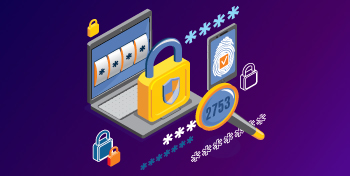When interacting with the blockchain trilemma, chains can usually achieve two of the three properties – scalability, decentralization and security. For a given level of security, scalability is inversely proportional to decentralization. Therefore, the blockchain must make compromises.
Scalability is the ability of a blockchain system to support the growth of the number of users and transactions without reducing performance.
Network overload
In most modern blockchains described on Coinmarketrate.com, as the number of transactions increases, the network becomes overloaded with pending transactions, which forces users to pay excessive fees.
Scalability is important because it allows you to reduce fees for services and open up new use cases, which ultimately helps attract new users.
These problems are especially pronounced for old-generation blockchains, such as Ethereum and Bitcoin. The following figures show the average fee price for Bitcoin and Ethereum transactions in US dollars, and their capacity utilization.
It should be noted that the capacity utilization of Ethereum has recently decreased to about 50% – the target level – due to the implementation of proposal 1559 to improve Ethereum. According to EIP-1559, the fee increases when the block load exceeds 50%, and vice versa.

For Bitcoin, there is a direct relationship between power limitations (lack of scalability), and the fee. When the system is in high demand, bottlenecks arise and usage fees increase.
Traditional payment networks
Compared to traditional financial solutions, the ratio of transaction speed and their cost is unfavorable for the old blockchain networks. Visa payment processors perform about 1,700 transactions per second (TPS) and can scale up to 65,000 TPS. For comparison, a blockchain like Ethereum can only handle 15 TPS.
Due to this limitation, competitors such as Binance Smart Chain, Solana and Polkadot have emerged, offering higher TPS, often due to greater centralization. The following table shows a comparison of the TPS of various blockchain platforms with VISA and PayPal.
Speaking about the scaling problem, Elon Musk tweeted about Dogecoin: “Ideally, Doge speeds up the block time by 10 times, increases the block size by 10 times, and reduces the fee by 100 times. Then it wins by a large margin from many.”
But no matter how tempting it may sound, you have to pay for it.
Does Musk’s suggestion make sense?
One of the key tenets of blockchain technology is to minimize trust, as is often said: “Don’t trust, check.” The blockchain should offer as few obstacles as possible if the user wants to launch a node and “test” the blockchain itself. This contributes to maximum decentralization and allows the blockchain to remain resistant to censorship and provides security against attacks.
Bitcoin overcame the ban on cryptocurrencies and the migration of Chinese miners to the United States and Kazakhstan because it was decentralized enough to keep the network running even in the event of a key player’s failure.
To ensure maximum decentralization and reliability, the blockchain should be light enough to run on average consumer equipment. The requirements for Bitcoin and Ethereum nodes are low enough to work on consumer laptops. For a chain with higher throughput, such as Solana, the requirements are higher, and only special institutional verifiers can verify transactions.
If we implement Elon Musk’s proposal, the requirements for nodes will be increased tenfold, which will lead to the defeat of decentralization, and make the chain vulnerable to censorship. Therefore, it is necessary to explore alternative solutions for scalability.
To illustrate this path, we will use Ethereum as an example and understand how these solutions work and what compromises need to be made when choosing these alternatives.

Fortunately, there are currently several solutions for scaling. Some of them are already in use and are at various stages of implementation, while others are still under development. Each of these solutions offers unique trade-offs and can basically be classified as follows:
- First-level solutions or network solutions: In these solutions, all transactions are processed on the main chain itself.
- Second-level or offline solutions: These solutions use an off-chain mechanism in which transactions and settlements take place outside the main network.
To better understand the difference between Level 1 and Level 2 solutions, imagine a road known for its congestion. The solution of the first level is to widen the road, mark intersections and widen traffic lanes to “withstand” more cars.
The second-level solution is to create a second road or public transport infrastructure, such as buses or metro, to avoid congestion.
First-level solutions
To illustrate solutions for scaling first-level blockchains, we give an example of Ethereum, which has started upgrading to Ethereum 2.0. The main reason for the transition to ETH 2.0 is to increase the throughput of the blockchain so that it can process more transactions and compete with newer Layer-1 solutions. The TPS should increase from ~15 today to ~100,000 when the upgrade is fully implemented along with the rollout. This will be a significant improvement, allowing you to expand the possibilities of use, and reduce transaction costs.
To achieve this speed, the Ethereum architecture will be “divided into parts” using sharding. Sharding means that the main chain is divided into several parallel chains to process transactions. This can be compared to the expansion of a single-lane road to a highway with a large number of lanes, in the case of Ethereum – 64.
Ethereum 2.0 Sharding Structure
Sharding allows you to distribute computing power and data storage capacity between several systems, reducing the requirements for node operators. Each shard will have its own independent state and transaction history. Thus, unlike the current version, there is no need to run an entire Ethereum node.
Among all chains working in parallel, the Beacon Chain will act as a regulatory level for coordinating all actions of the system, storing and managing the register of validators, as is the case, for example, in DecimalChain (DEL), when choosing block producers and applying consensus rules.
For blockchain and crypto assets to fulfill their ambitious promises of worldwide computers and money for the internet, they must be sustainably scalable. The scalability solution will not be universal, and different use cases will require different scaling and security requirements. So far we have sorted out scalability problems and ideas for first-level blockchains, but in one of the following articles we will talk about various solutions built on top of it, the so-called second-level platforms.


